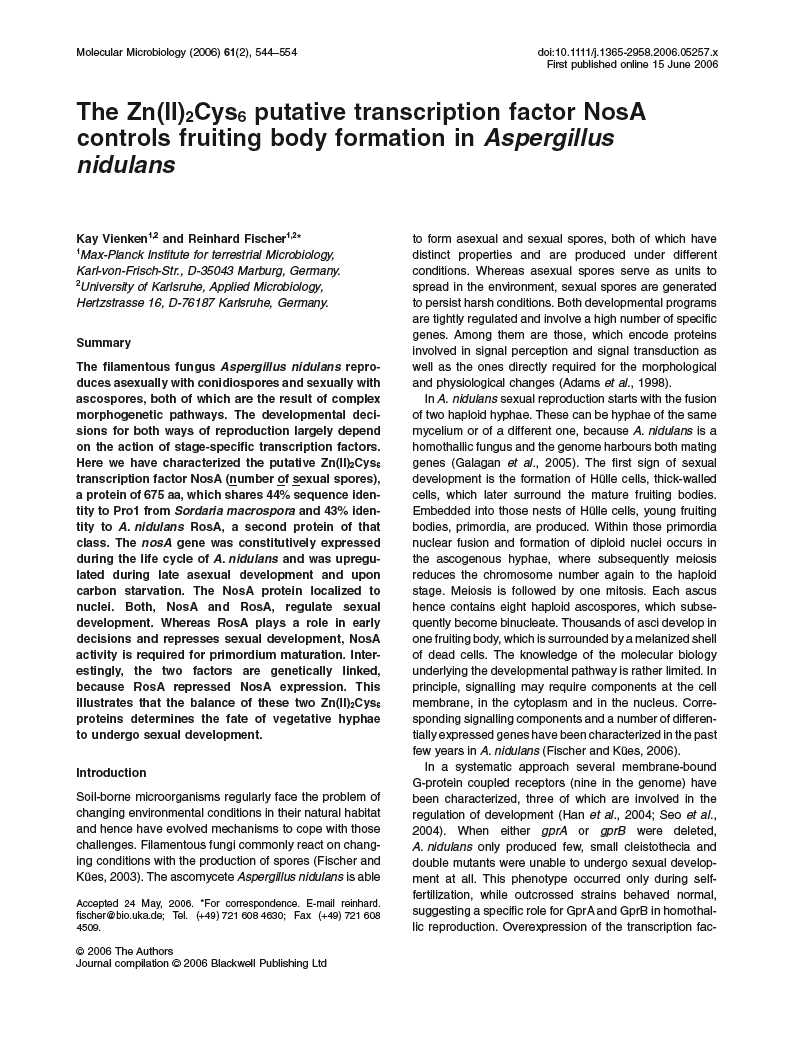Vienken and Fischer 2006
The Zn(II)2Cys6 putative transcription factor NosA controls fruiting body formation in Aspergillus nidulans. Mol. Microbiol., 62(2):544-554.
Vienken, K. & Fischer, R.
Abstract
The filamentous fungus Aspergillus nidulans reproduces asexually with conidiospores and sexually with ascospores, both of which are the result of complex morphogenetic pathways. The developmental decisions for both ways of reproduction largely depend on the action of stage-specific transcription factors. Here we have characterized the putative Zn(II)(2)Cys(6) transcription factor NosA (number of sexual spores), a protein of 675 aa, which shares 44% sequence identity to Pro1 from Sordaria macrospora and 43% identity to A. nidulans RosA, a second protein of that class. The nosA gene was constitutively expressed during the life cycle of A. nidulans and was upregulated during late asexual development and upon carbon starvation. The NosA protein localized to nuclei. Both, NosA and RosA, regulate sexual development. Whereas RosA plays a role in early decisions and represses sexual development, NosA activity is required for primordium maturation. Interestingly, the two factors are genetically linked, because RosA repressed NosA expression. This illustrates that the balance of these two Zn(II)(2)Cys(6) proteins determines the fate of vegetative hyphae to undergo sexual development.

